About Some Unsolved Problems in the Stability Theory of Stochastic Differential and Difference Equations
Abstract
1. Introduction
Auxiliary Definitions and Statements
- -
- mean square stable if, for each , there exists such that , , provided that ;
- -
- asymptotically mean square stable if it is mean square stable, and for each initial function , the solution to Equation (1) satisfies the condition .
2. Equation Without Delays
3. About the Problem of Stabilization by Noise
3.1. Equation Without Delay
3.2. Purely Stochastic Equation
3.3. Stochastic Difference Equation
4. Conclusions
Funding
Data Availability Statement
Conflicts of Interest
References
- Shaikhet, L. About some unsolved problems of stability theory for stochastic hereditary systems. In Proceedings of the Leverhulme International Network: Numerical and Analytical Solution of Stochastic Delay Differential Equations, University of Chester, Chester, UK, 31 August–3 September 2010; Abstracts. pp. 6–7. [Google Scholar]
- Shaikhet, L. Unsolved stability problem for stochastic differential equation with varying delay. In Proceedings of the Leverhulme International Network: Numerical and Analytical Solution of Stochastic Delay Differential Equations, University of Chester, Chester, UK, 5–7 September 2011; Abstracts. p. 21. [Google Scholar]
- Shaikhet, L. About an unsolved stability problem for a stochastic difference equation with continuous time. J. Differ. Equ. Appl. 2011, 17, 441–444. [Google Scholar] [CrossRef]
- Shaikhet, L. Two unsolved problems in the stability theory of stochastic differential equations with delay. Appl. Math. Lett. 2012, 25, 636–637. [Google Scholar] [CrossRef]
- Shaikhet, L. About an unsolved optimal control problem for stochastic partial differential equation. In Proceedings of the XVI International Conference “Dynamical System Modeling and Stability Investigations” (DSMSI-2013), Kiev, Ukraine, 29–31 May 2013; Abstracts. p. 344. [Google Scholar]
- Shaikhet, L. Some Unsolved Problems: Problem 1, Problem 2. In Lyapunov Functionals and Stability of Stochastic Functional Differential Equations; Springer Science & Business Media: Berlin/Heidelberg, Germany, 2013; pp. 51–52. [Google Scholar]
- Shaikhet, L. Some unsolved problems in stability and optimal control theory of stochastic systems. Mathematics 2022, 10, 474. [Google Scholar] [CrossRef]
- Shaikhet, L. About an unsolved problem of stabilization by noise for difference equations. Mathematics 2024, 12, 110. [Google Scholar] [CrossRef]
- Shaikhet, L. Unsolved problem about stability of stochastic difference equations with continuous time and distributed delay. Mod. Stochastics Theory Appl. 2024, 11, 395–402. [Google Scholar] [CrossRef]
- Shaikhet, L. About one unsolved problem in asymptotic p-stability of stochastic systems with delay. AIMS Math. 2024, 9, 32571–32577. [Google Scholar] [CrossRef]
- Gikhman, I.I.; Skorokhod, A.V. Stochastic Differential Equations; Springer: Berlin/Heidelberg, Germany, 1972. [Google Scholar]
- Gikhman, I.I.; Skorokhod, A.V. The Theory of Stochastic Processes; Springer: Berlin/Heidelberg, Germany, 1979; Volume III. [Google Scholar]
- Shaikhet, L. Lyapunov Functionals and Stability of Stochastic Functional Differential Equations; Springer Science & Business Media: Berlin/Heidelberg, Germany, 2013. [Google Scholar] [CrossRef]
- Shaikhet, L. About stability of delay differential equations with square integrable level of stochastic perturbations. Appl. Math. Lett. 2019, 90, 30–35. [Google Scholar] [CrossRef]
- Shaikhet, L. Stability of delay differential equations with fading stochastic perturbations of the type of white noise and Poisson’s jumps. Discret. Contin. Dyn. Syst. Ser. B 2020, 25, 3651–3657. [Google Scholar] [CrossRef]
- Shaikhet, L. Lyapunov Functionals and Stability of Stochastic Difference Equations; Springer Science & Business Media: Berlin/Heidelberg, Germany, 2011. [Google Scholar] [CrossRef]
- Gu, K. Discretized LMI set in the stability problem of linear time-delay systems. Int. J. Control 1997, 68, 923–934. [Google Scholar] [CrossRef]
- Fridman, E.; Shaikhet, L. Stabilization by using artificial delays: An LMI approach. Automatica 2017, 81, 429–437. [Google Scholar] [CrossRef]
- Fridman, E.; Shaikhet, L. Simple LMIs for stability of stochastic systems with delay term given by Stieltjes integral or with stabilizing delay. Syst. Control Lett. 2019, 124, 83–91. [Google Scholar] [CrossRef]
- Kapitza, P.L. Dynamical stability of a pendulum when its point of suspension vibrates, and pendulum with a vibrating suspension. In Collected Papers of P.L. Kapitza; ter Haar, D., Ed.; Pergamon Press: London, UK, 1965; Volume 2, pp. 714–737. [Google Scholar]
- Mitchell, R. Stability of the inverted pendulum subjected to almost periodic and stochastic base motion—An application of the method of averaging. Int. J. Nonlinear Mech. 1972, 7, 101–123. [Google Scholar] [CrossRef]
- Levi, M. Stability of the inverted pendulum—A topological explanation. SIAM Rev. 1988, 30, 639–644. [Google Scholar] [CrossRef]
- Blackburn, J.A.; Smith, H.J.T.; Gronbech-Jensen, N. Stability and Hopf bifurcations in an inverted pendulum. Am. J. Phys. 1992, 60, 903–908. [Google Scholar] [CrossRef]
- Levi, M.; Weckesser, W. Stabilization of the inverted linearized pendulum by high frequency vibrations. SIAM Rev. 1995, 37, 219–223. [Google Scholar] [CrossRef]
- Lozano, R.; Fantoni, I.; Block, D.J. Stabilization of the inverted pendulum around its homoclinic orbit. Syst. Control Lett. 2000, 40, 197–204. [Google Scholar] [CrossRef]
- Borne, P.; Kolmanovskii, V.; Shaikhet, L. Stabilization of inverted pendulum by control with delay. Dyn. Syst. Appl. 2000, 9, 501–514. [Google Scholar]
- Imkeller, P.; Lederer, C. Some formulas for Lyapunov exponents and rotation numbers in two dimensions and the stability of the harmonic oscillator and the inverted pendulum. Dyn. Syst. 2001, 16, 29–61. [Google Scholar] [CrossRef]
- Mata, G.J.; Pestana, E. Effective Hamiltonian and dynamic stability of the inverted pendulum. Eur. J. Phys. 2004, 25, 717–721. [Google Scholar] [CrossRef]
- Sharp, R.; Tsai, Y.-H.; Engquist, B. Multiple time scale numerical methods for the inverted pendulum problem. In Multiscale Methods in Science and Engineering; Lecture Notes Computing Science and Engineering; Springer: Berlin/Heidelberg, Germany, 2005; Volume 44, pp. 241–261. [Google Scholar]
- Ovseyevich, A.I. The stability of an inverted pendulum when there are rapid random oscillations of the suspension point. J. Appl. Math. Mech. 2006, 70, 762–768. [Google Scholar] [CrossRef]
- Sanz-Serna, J.M. Stabilizing with a hammer. Stoch. Dyn. 2008, 8, 47–57. [Google Scholar] [CrossRef]
- Shaikhet, L. About Stabilization of the Controlled Inverted Pendulum under Stochastic Perturbations of the Type of Poisson’s Jumps. Axioms 2025, 14, 29. [Google Scholar] [CrossRef]
- Khasminskii, R.Z. Stochastic Stability of Differential Equations; Springer: Berlin/Heidelberg, Germany, 2012. [Google Scholar]
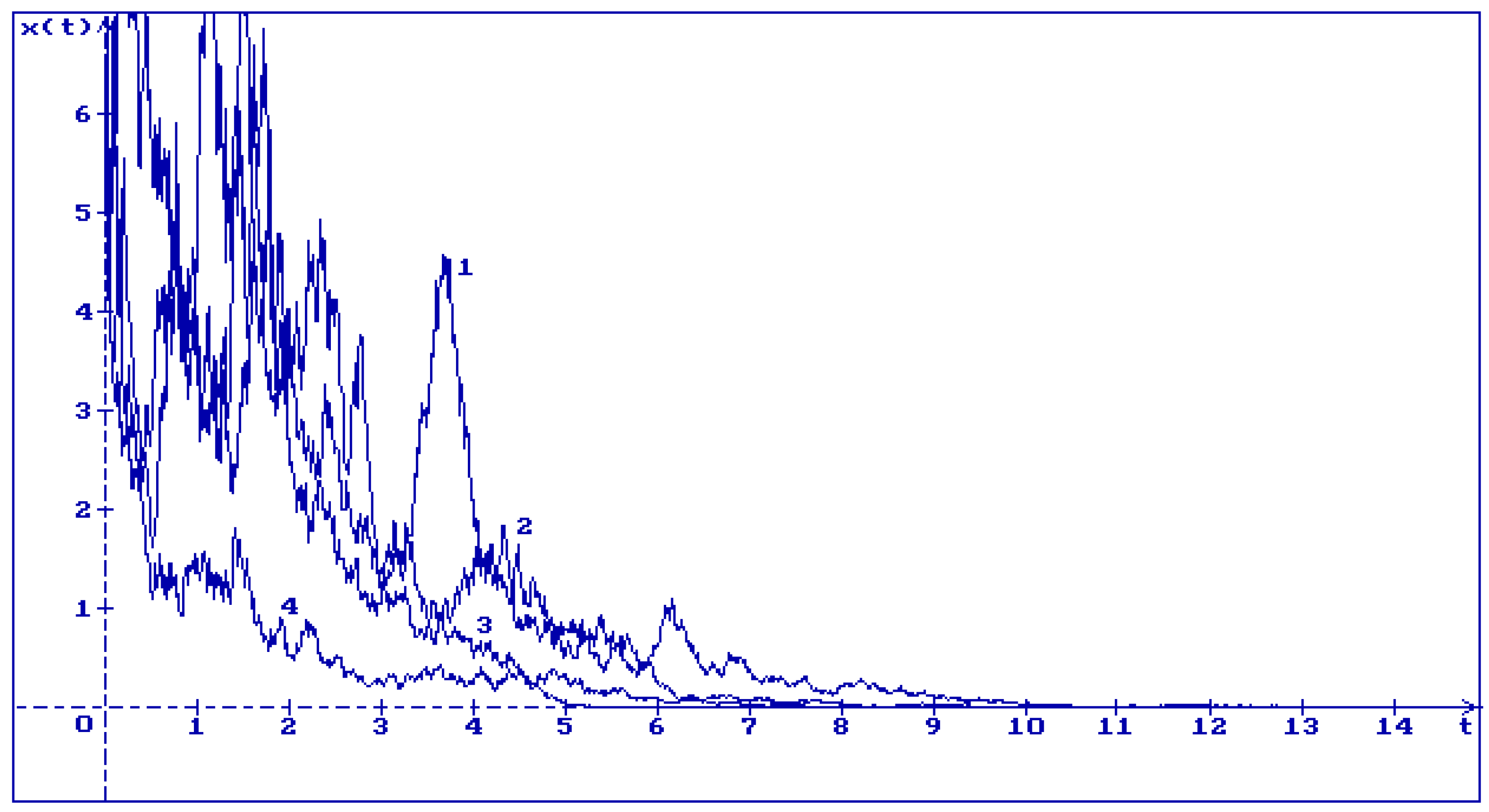
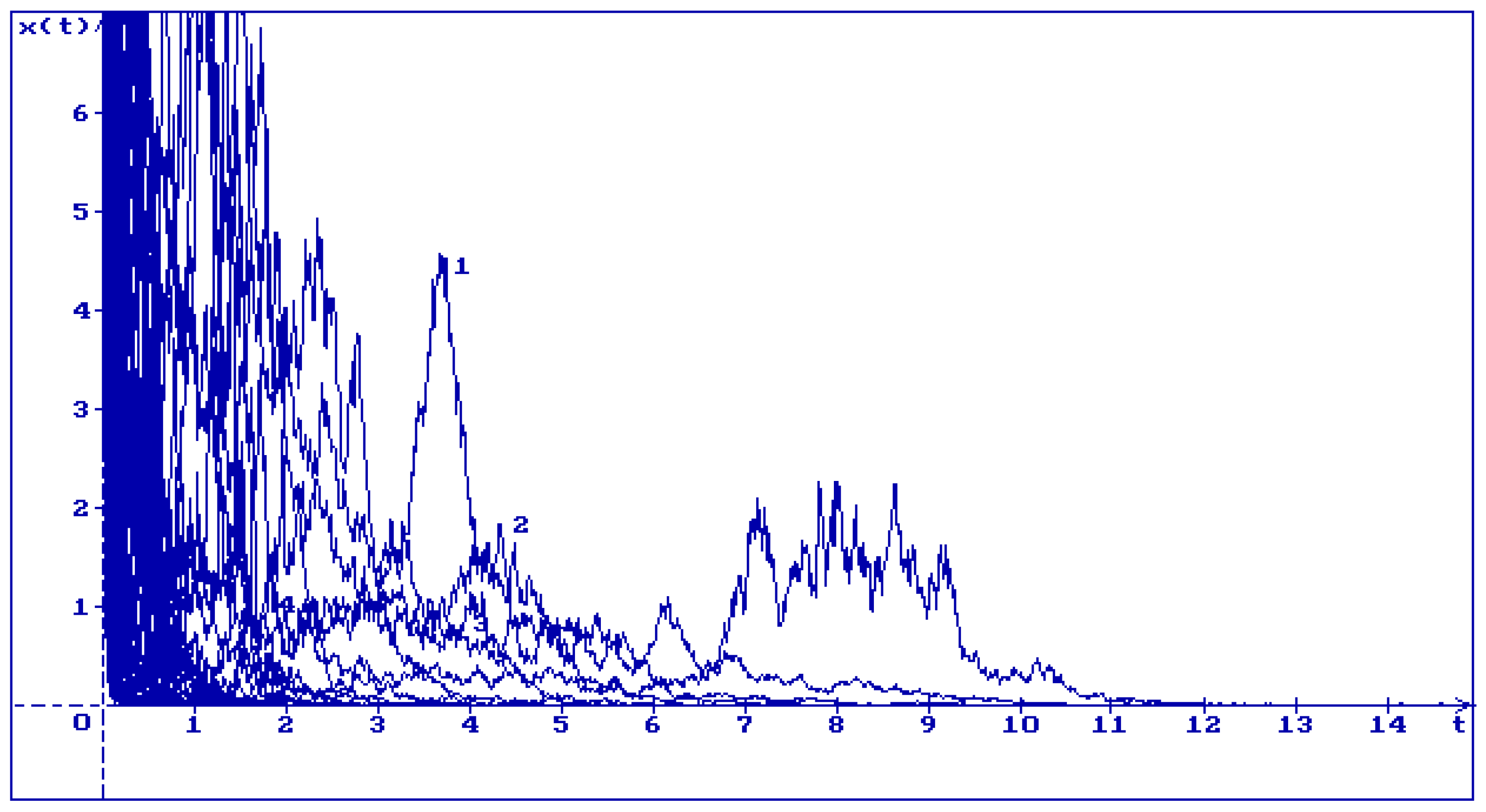
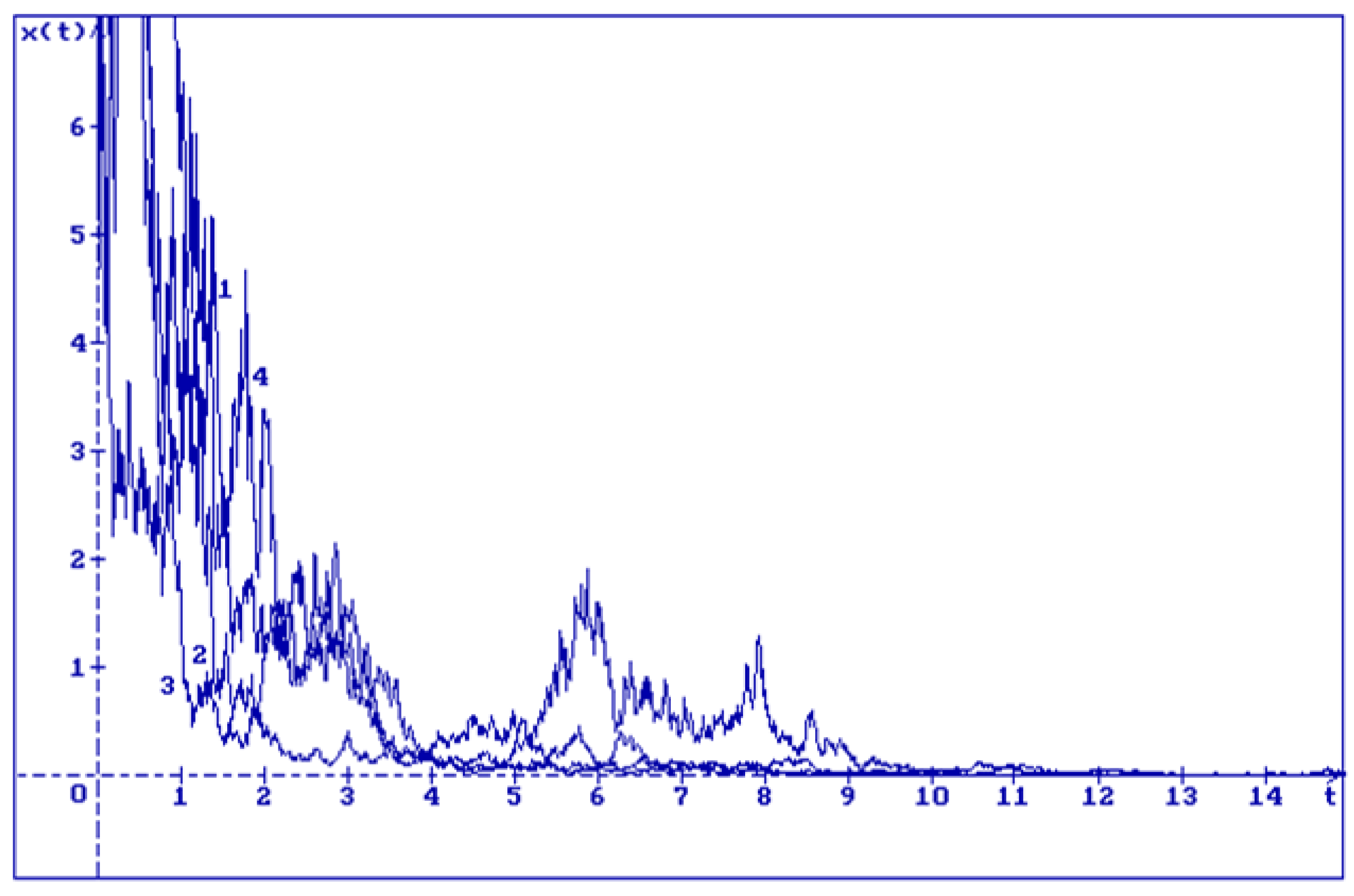
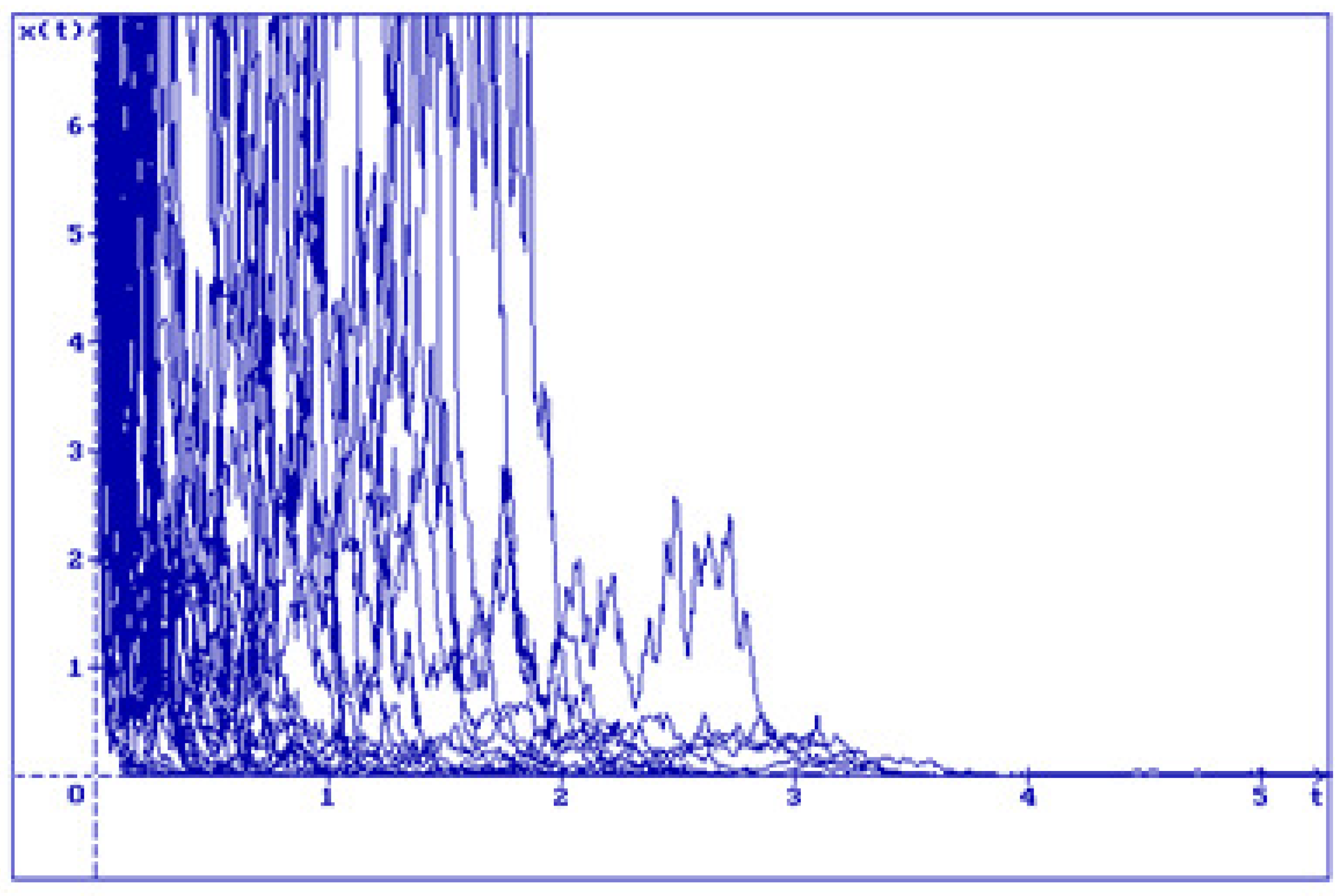
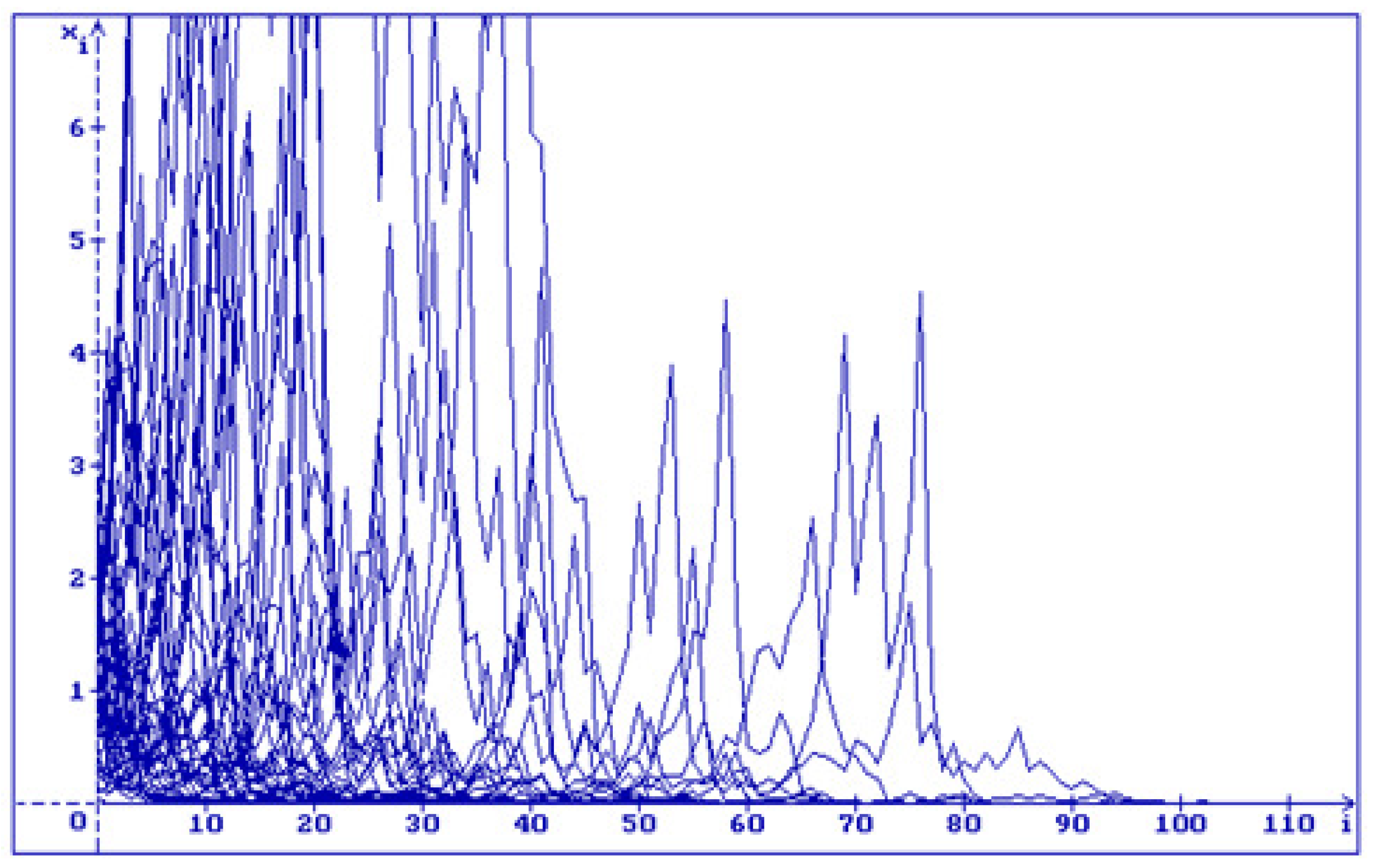
Disclaimer/Publisher’s Note: The statements, opinions and data contained in all publications are solely those of the individual author(s) and contributor(s) and not of MDPI and/or the editor(s). MDPI and/or the editor(s) disclaim responsibility for any injury to people or property resulting from any ideas, methods, instructions or products referred to in the content. |
© 2025 by the author. Licensee MDPI, Basel, Switzerland. This article is an open access article distributed under the terms and conditions of the Creative Commons Attribution (CC BY) license (https://creativecommons.org/licenses/by/4.0/).
Share and Cite
Shaikhet, L. About Some Unsolved Problems in the Stability Theory of Stochastic Differential and Difference Equations. Axioms 2025, 14, 452. https://doi.org/10.3390/axioms14060452
Shaikhet L. About Some Unsolved Problems in the Stability Theory of Stochastic Differential and Difference Equations. Axioms. 2025; 14(6):452. https://doi.org/10.3390/axioms14060452
Chicago/Turabian StyleShaikhet, Leonid. 2025. "About Some Unsolved Problems in the Stability Theory of Stochastic Differential and Difference Equations" Axioms 14, no. 6: 452. https://doi.org/10.3390/axioms14060452
APA StyleShaikhet, L. (2025). About Some Unsolved Problems in the Stability Theory of Stochastic Differential and Difference Equations. Axioms, 14(6), 452. https://doi.org/10.3390/axioms14060452





